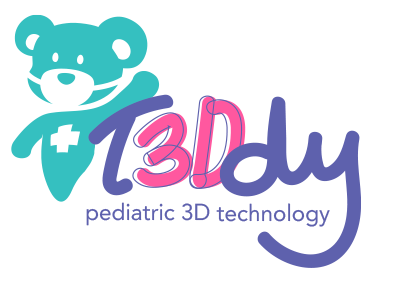3D printing is proving to be particularly useful in reproducing complex anatomical geometries; it is a powerful tool for the construction not only of custom implantable devices, but also of physical replicas useful for the planning/simulation of complex interventions. In this regard, we reported a case in which the use of this technology has allowed, through the close collaboration of engineers and neurosurgeons, the definition of a minimally invasive surgical strategy for a complex cranioplasty surgery where previous attempts to correct the skull gap had failed.
The patient had previously undergone two surgeries that involved the opening of the cranial vault and the subsequent repositioning of the same resected bone segment. After the second operation, some later complications (major infection and dystrophy of the skin flap) made graft removal necessary. Two other attempts at correction were attempted with methyl methacrylate prostheses, both of which failed after several months due to wound complications. The patient presented an important sinking of the cranial vault, covered by a dystrophic and very thin skin: the condition of the skin tissue was such that it did not allow a further reopening of the edges of the previous incisions, so as not to risk necrosis.
In order to plan an adequate intervention strategy, the patient’s cranial vault was reproduced in plastic using an FDM printer and moulds were created in which to pour silicone material with suitable characteristics to reproduce the skin. On the head replica, various alternatives of the surgical strategy and positioning of the plate were tested, until the surgeon planned an innovative minimally invasive intervention: the skin opening would have the minimum size to allow the passage of the short side of the plate, which would then be slid inside the dissection to its final position. Physical references on the device made it possible to precisely identify the correct positioning. The fixing, carried out by screws, was done transcutaneously on the sides of the plate covered by the skin, thanks to reference points designed to allow the identification of the appropriate holes.
Once the correct strategy was identified, the model was then used to simulate the intervention. This also made it possible to verify that the delicate skin was suitable to cover the normal oval shape of the reconstructed skull, avoiding the need for a skin expander.
The operation was performed after 6 months of careful evaluation and simulation. The implanted device was made of titanium alloy using EBM technology. The surgery, as expected, required special attention during subcutaneous dissection to avoid dystrophic skin damage. Thanks to the design and refined preoperative simulations, there were no problems in plate positioning or transcutaneous plate fixation. The skin opening was about 1/3 of that required for a traditional intervention.
The study of the postoperative CT and its comparison with the design predictions showed almost perfect plate positioning. There were no adverse events or complications 8 months after surgery.
The case presented shows how 3D printing is a very powerful tool for surgical planning and simulation, allowing all possible strategies and their risks to be evaluated in a safe way for the patient during the pre-operative procedure. This makes it possible to customize not only the device itself, but also the entire surgery to the specific needs of the patient. This great possibility of customization, simulation and forecasting is unprecedented, and represents the great innovation introduced by 3D printing. The introduction of the 3D printer in medicine has revolutionized clinical practice, allowing the exact physical reproduction of complex and geometrically difficult anatomical shapes with traditional production techniques. In this way, the surgeon can handle a physical replica of the anatomy of interest, allowing tactile exploration of the site to be operated and a greater awareness of the volume to be obtained.

